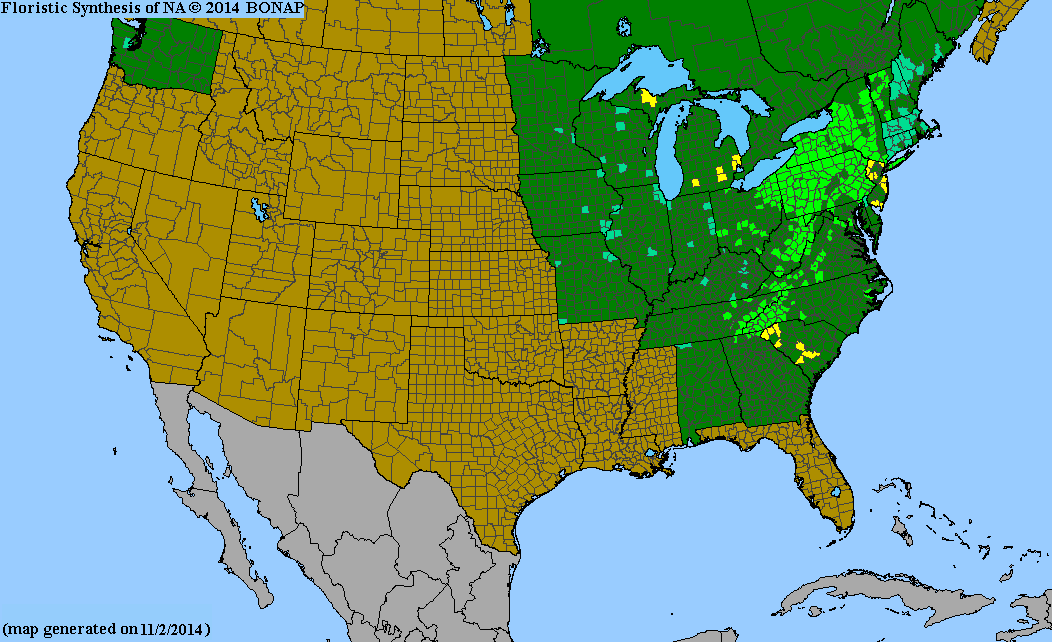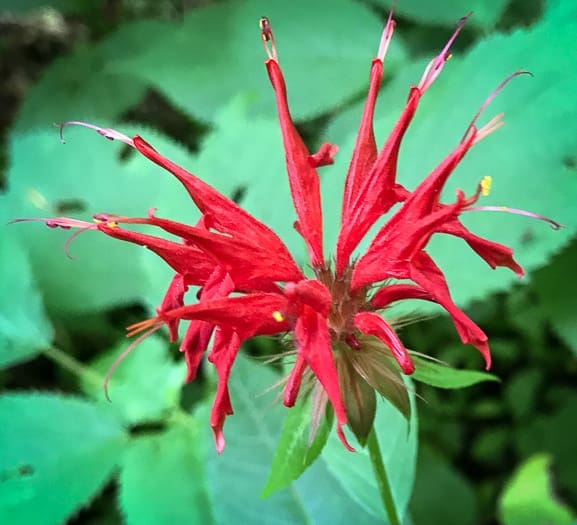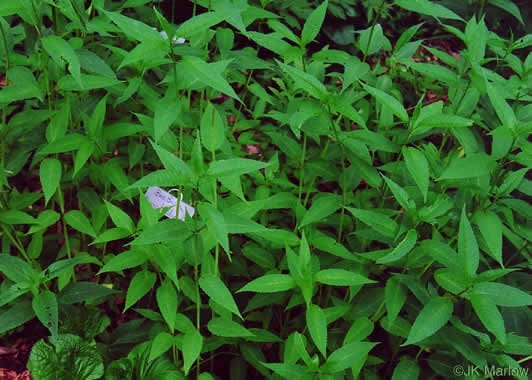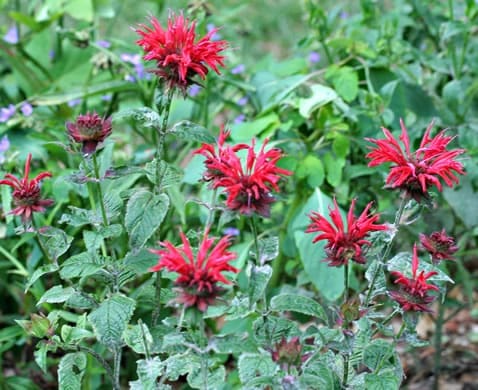Lamiaceae
scarlet beebalm
Monarda didyma
Other Common Names
Oswego tea
Plant Type
Herbaceous Wildflower
Life Cycle
Perennial
Typical Size
2-4 ft. tall
2-3 ft. wide
Tolerant of
Deer
Inolerant of
Poorly Drained Soil
Propagation
By seed, By cutting, By division
Plant Propagation Notes
Take cuttings in late spring. Cold moist stratify seed for 3-4 weeks.
Plant Planting Notes
Plant in an area where this plant can spread.
Plants/Diseases
High susceptibility to powdery mildew. Avoid top watering. Available cultivars are powdery mildew resistant.
Wildlife Benefits
Nectar/pollen source for pollinating insects, Nectar source for hummingbirds
Leaves
Leaves opposite, lanceolate to ovate with serrate margins.
Flowers
Bright red tubular flowers arranged in a head.
Fruit
Capsule.
Toxicity
No known toxicity.
Edibility
Flowers and leaves are edible and used in tea.

USDA Hardiness Zones
4, 5, 6, 7, 8, 9
Light Exposure
Full Sun, Part Sun/Shade
Soil Moisture
Medium, Moist
Soil Drainage
Well-drained
Soil pH
Acidic (less than 6.0), Neutral (6.0-8.0)
Native in South Carolina?
Yes
Plant Native Habitat
Borderline wet areas such as seepage slopes and streambanks.
Global Conservation Status (NatureServe)
Secure (G5)
Federal Conservation Status (USFWS)
Not Listed
Distribution Notes
Rare in the mountains. Not naturally occurring in the rest of South Carolina.



